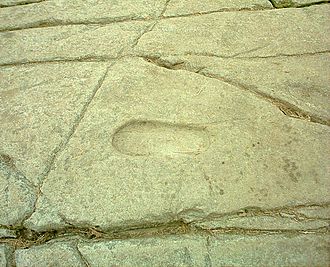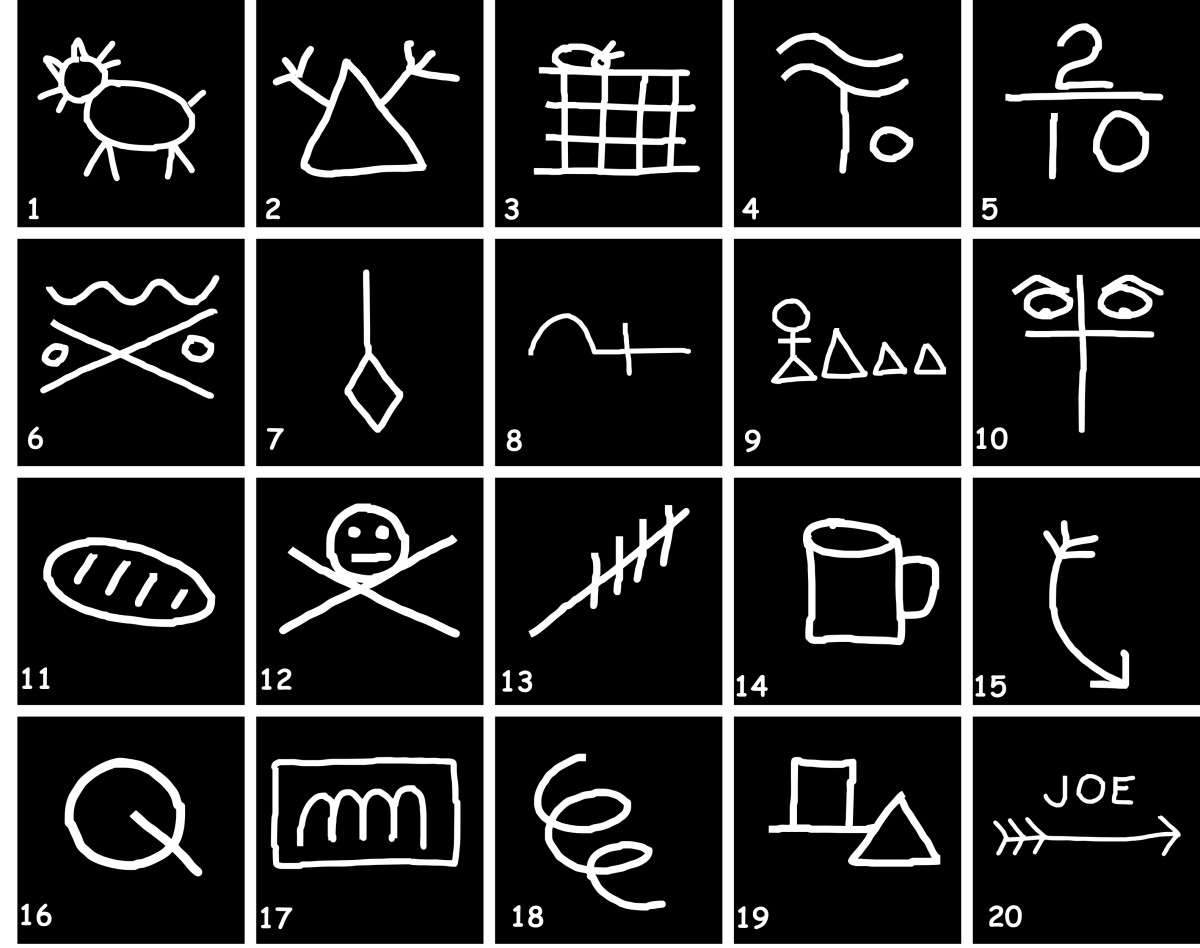I think the hobos of yesteryear worked out a pretty good system that still works well for them these days:
Hobo language (signs) - old school communication during the Great Depression that still persists to this day (with the addition of wifi symbols, lol).
https://owlcation.com/humanities/All...ns-and-symbols (sorry, dead link, but I saved this quote in my files):
The early 1900s were a time of displacement of over 500,000 people in the U.S. Many became Hobos and became a migrant society seeking work as they criss-crossed the country. The most common routes followed the railway lines and it was often a dangerous and meager lifestyle. Hobos communicated to one another by carving or drawing symbols on trees, post, bridges, and even houses to both offer directional guidance and warnings of what lay ahead. What follows are 60 of the most common along with the message behind them.
Here is a handy dandy chart that I will be copying into my (old school paper) notebook and committing some to memory. Who knows when I might see some of these symbols, and may find it useful to know what they mean.
https://usercontent1.hubstatic.com/12151216_f520.jpg
Hobo symbol meanings 1- 20
a1.Kind lady lives here. Hobos who found or left this mark could rely on a bite to eat with nothing expected in return. These women were generally the welcoming “mothering” type of individuals who found great compassion for respectful hobos.
a2. Man with gun lives here. This symbol warned hobos that knocking on the door or even stepping on the property of this man would be met with a show of hostility. Move quickly, move on.
a3. Jail has cooties. Sometimes by choice hobos would allow themselves to be put in situations that would earn them jail time in the hopes of getting out of foul weather or for a meal or two. This symbol warned that the town’s jail was dirty and bug ridden. Not a good lodging choice.
a4. Okay to sleep in barn. There were many variations of this symbol but should a hobo discover one, they would know that either by sneaking or asking permission, the barn or hayloft was a good place to sleep or escape foul weather.
a5. Beware thieves about. Keep your two eyes on “his” ten fingers. Finding this sign at a hobo camp or a meeting spot indicated that theft was suspected among them. Keep any of your belongings close to you at all times especially while sleeping.
a6. Good water, good place to camp. Miles between towns were often many. It could take days to reach your next destination. Finding a safe place to camp undisturbed that had good clean water nearby and had plenty of firewood made the perfect camp. Finding this symbol was a relief, especially after a long walk.
a7. Be prepared to defend yourself. Coming across this symbol, a hobo would make sure that he stayed alert for aggressive behavior amongst other hobos or in areas that frowned upon them. Any sign of cowardness was an indicator that you were easily overcome and either robbed or abused.
a8. Crooked man lives here. Hobos sometimes found that a homeowner or a business would invite them to work or feed them but after serving, would be quickly run away with no payment of any kind. Observance of a man who was abusive to his children or witnessing a deceptive behavior would also be disserving of this symbol being posted near the location to warn others.
a9. Tell a pitiful story. Experienced hobos with a bit of acting skills could easily manipulate potential marks by telling a hard luck story or assuming a pitiful look. This worked especially well for child, female, and teen hobos.
a10. Police are hostile. Many times police and town officials were outwardly and physically aggressive towards any hobo regardless of his actions. In some cases this was purposefully done to arrest and put the hobo to work for free.
a11. Get bread here: Hobos became very good misers and learned to making much out of little. Even the less fortunate of homes generally could spare a slice of stale bread or leftover rolls. If a bread symbol could be found, the chance of assembling a meal of simple ingredients was a chance of a full belly
a12. Doctor lives here: Life on the rails and road was hard and brutal. “Marking” the homes of doctors or even a person with basic medical knowledge could mean the difference between life or death.
a13. Get cursed out here: Hobos were regarded in some towns as human trash and took pleasure in demeaning and verbally insulting any hobo who happened by their way. The law would take measures against any hobo who retaliated in any way.
a14. Wet town, alcohol here: This symbol shows an open mug which means that this town serves alcohol. This same symbol without showing the top, would mean that this town is a “dry” town.
a15. Go around this town: The bad experience of others was communicated through the display of this symbol. It meant to take the long way around or trouble was sure to happen.
a16. Go this way: This was a common directional sign that indicated the right direction to go when faced with a cross road or intersection. Depending on the direction of the line, other hobos could save time and avoid danger.
a17. Dogs in garden: To keep would-be hobo garden robbers from plucking the vegetables from the garden plot, dogs would be staked or left free to roam within its boundaries. Hobos who experienced such an unpleasant surprise would warn others who may have their eye on the ingredients for their evening’s meal.
a18. Judge lives here: Trying to beg or even disturbing the home of a judge or other law official was a good way to get thrown in jail quickly. Stay away if you see this sign.
a19. Kind gentleman lives here: The top hat represents kind or rich gentleman, the triangle represents a home. Together they mean kind or rich gentleman or family lives here.
a20. I went this way: If two hobos agreed to meet up down the road, the hobo who got there first would leave a message symbol that showed his moniker (his road name), and that he would be waiting in the next closest town.


